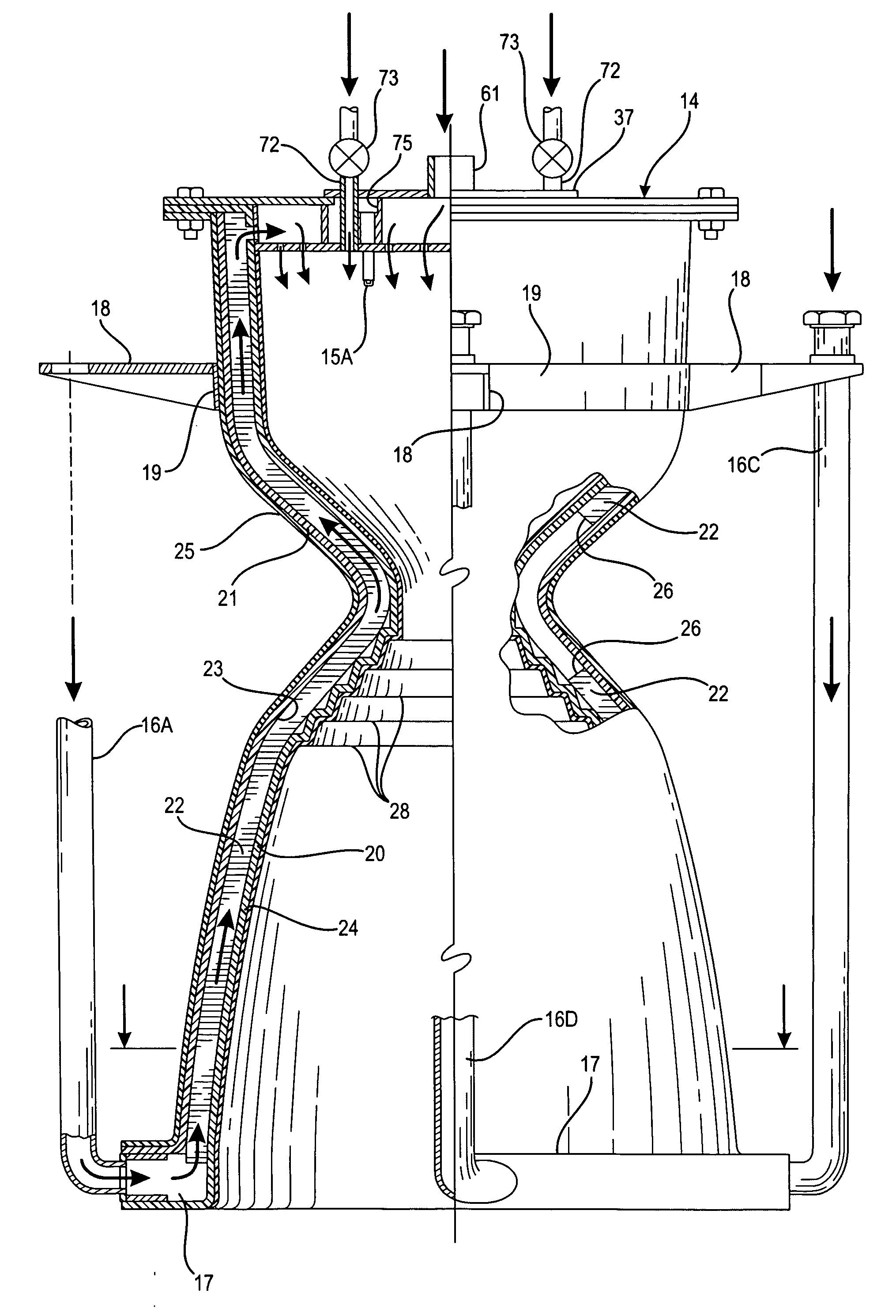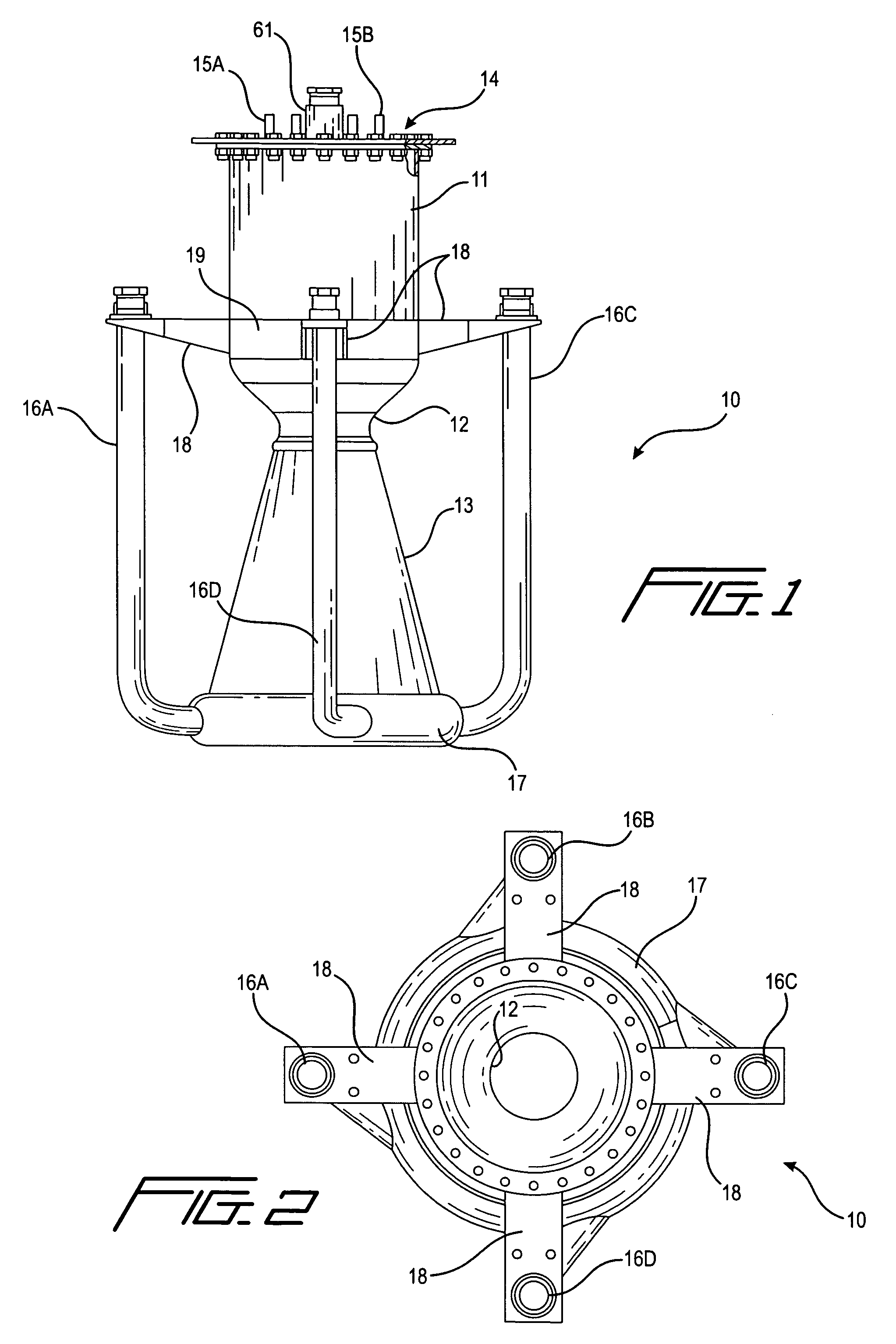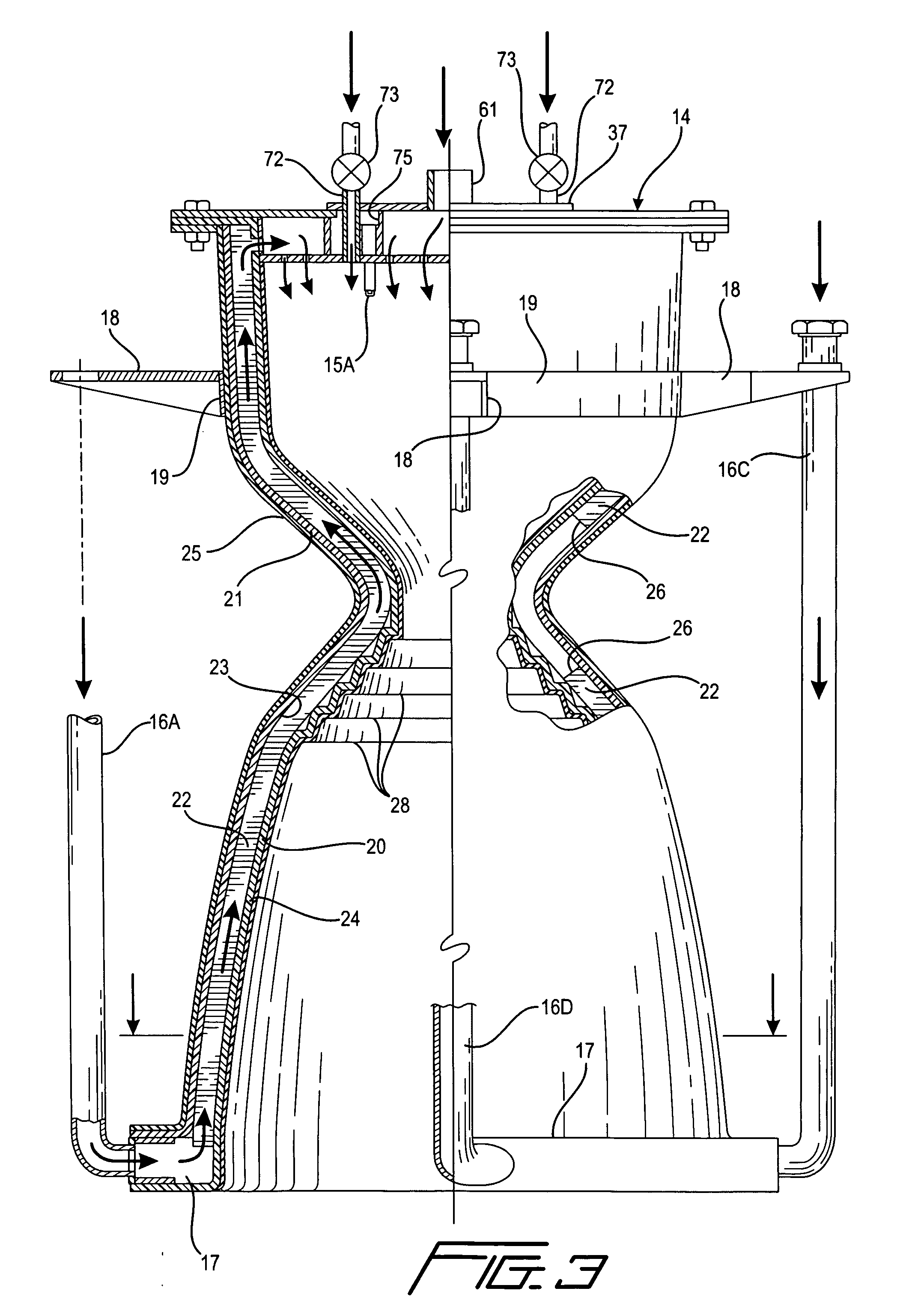Reinforced, regeneratively cooled uni-body rocket engine
a rocket engine and regenerative cooling technology, applied in the field of rocket engines, can solve the problems of increasing the mass of the launcher, liquid oxygen, and significantly increasing the mass of the spaceship
- Summary
- Abstract
- Description
- Claims
- Application Information
AI Technical Summary
Benefits of technology
Problems solved by technology
Method used
Image
Examples
Embodiment Construction
[0062]A first embodiment of rocket engine according to the invention is shown in FIGS. 1-21 and 28. As seen in FIG. 1, the engine 10 comprises a combustion chamber 11 of substantially cylindrical shape, a reduced diameter throat 12, and an outwardly flared exhaust bell or nozzle 13, forming a rocket engine body of substantially conventional shape but incorporating unique features as described hereinafter. A fuel plate assembly 14 is mounted to the upper end of the combustion chamber for supplying fuel and oxidizer to the combustion chamber, and igniters 15A and 15B extend through the fuel plate assembly and into the combustion chamber for igniting the fuel and oxidizer mixture. Four oxidizer tubes 16A, 16B, 16C and 16D are provided in this embodiment, extending longitudinally of the engine and connected tangentially at their lower ends to an oxidizer ring 17 on the bottom end of the exhaust bell, and connected at their upper ends to mounting brackets 18 that are in turn secured to a...
PUM
 Login to View More
Login to View More Abstract
Description
Claims
Application Information
 Login to View More
Login to View More - R&D
- Intellectual Property
- Life Sciences
- Materials
- Tech Scout
- Unparalleled Data Quality
- Higher Quality Content
- 60% Fewer Hallucinations
Browse by: Latest US Patents, China's latest patents, Technical Efficacy Thesaurus, Application Domain, Technology Topic, Popular Technical Reports.
© 2025 PatSnap. All rights reserved.Legal|Privacy policy|Modern Slavery Act Transparency Statement|Sitemap|About US| Contact US: help@patsnap.com



